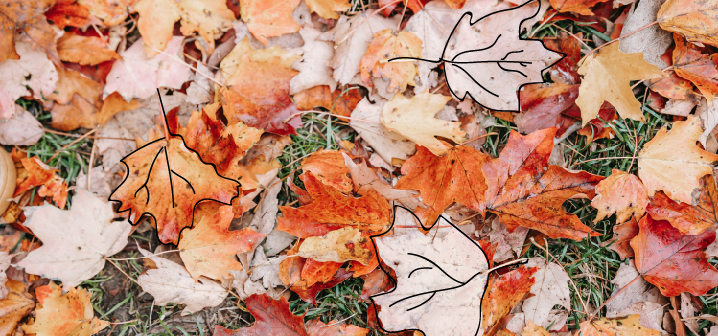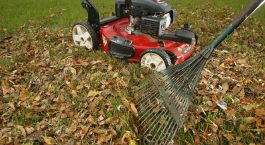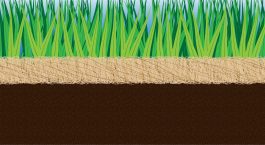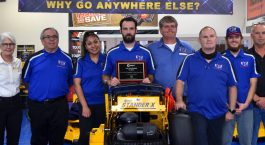Shortcuts
Fall Lawn Care Equipment
The first step to fall lawn care is having the proper equipment (or at least knowing what you will need to rent/borrow). Early fall is going to be the time that heavy equipment is needed. This equipment includes machines such as aerators, slicers and seeders, power rakes (dethatchers), and overseeders. Many people do not personally own this equipment because it is large, expensive, and rarely used. A lot of local outdoor power equipment shops will let you rent a good bit of this equipment, but it can be hard to get your hands on at the right time. this is why it is sometimes the best plan is to hire a professional for some of your fall care.
As it continues to get later into the season, different equipment will be useful. First and foremost, it is wise to have some power equipment to help clean up fall debris. This could be a leaf blower, leaf vacuum, and/or debris loader. It will be important to keep your lawn clear of fall debris to promote growth. Furthermore, a set of mulching blades (and a mulch kit) for your mower would be nice to have. A mulch kit will allow you to shred up some of the leaves and return them to the soil which can help overall lawn health.
DO NOT mulch leaves all the time. This should really only be done a couple times throughout the fall. Finally, invest in a nice rake. While you can clean up the yard nicely with a blower or other piece of powered equipment, a rake will clear debris as well as thatch.
Early Fall Lawn Care
The schedule that will be outlined below is most applicable to cool season grasses, but the tips will apply to most grass types. The two basic types of grass are cool season and warm season. The key differences are when they grow and what they can withstand. Cool season grasses grow during cooler seasons (fall and spring) while warm season grows in heat (summer). Cool season grasses can also withstand cooler temperatures. Below is a map that shows where grass types are most common. Most of the grasses in transition zones should be treated like cool-season grass, but that is not always the case. Be sure to research your specific grass type for more personalized tips.
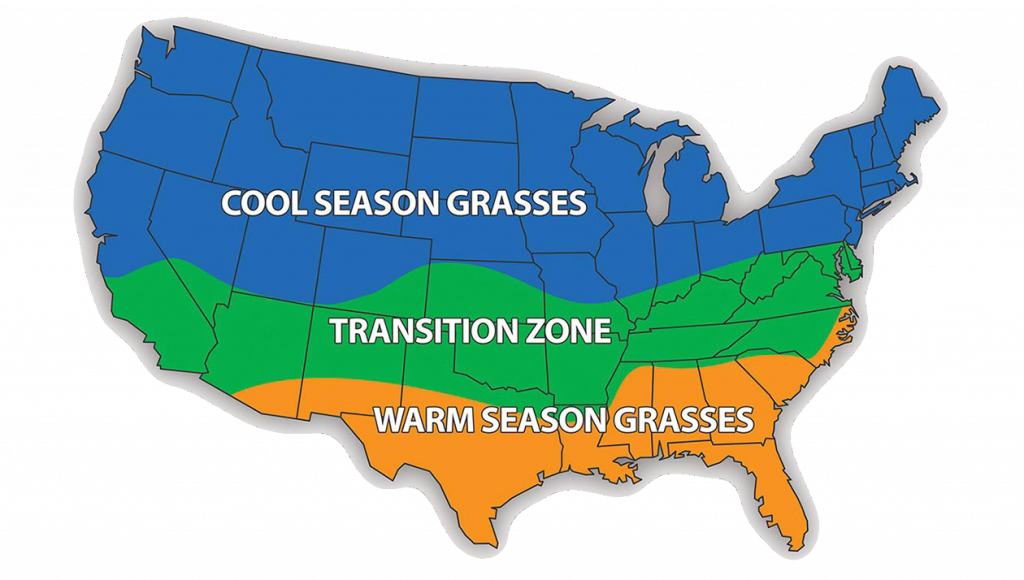
Dethatch
Thatch is the layer of built up layer of stems, leaves, roots, and grass that forms between actively growing grass and soil. A healthy lawn should have about a half inch of thatch, but an overabundance of thatch is bad for a lawn. It can block water and nutrients from reaching the soil as well as fertilizers and seeds. Dethatching tames the amount of thatch between the soil and grass.
Dethatching does not have to be done yearly. Check if your lawn needs dethatched by removing a section and measuring the buildup. If it is greater than a half inch, you should dethatch your lawn prior to aerating. You can use a dethatching rake if you have a small area or buy/rent a dethatcher. If you decide to rent a dethatcher be sure to follow all instructions and ask the shop you are renting from to help you adjust it before taking it home. If you feel uncomfortable dethatching the lawn yourself, you can generally higher a lawn care expert to take care of it. After dethatching be sure to remove the thatch using a regular rake or leaf/lawn vac.
Aerate
Aeration is paramount to starting off your fall lawn care properly. Heavy-use of the lawn over spring and summer compacts the soil. Compacted soil impedes root growth, blocks out water, and reduces the exchange rate of gasses. In short, grass and other plants have trouble growing in compacted soil. This is where aeration comes in.

Aeration will open up the soil and relieve the compression. In addition, it allows for fertilizers and seeds to reach the root system more easily, which will promote growth before winter. Aeration is best done in early spring, right when the weather starts to break (generally late August to early September). Aerating early in the season will allow for a smooth schedule afterwards. Thanks to aerating, each of the tasks that come after will “take root” better (pun intended). Read more about aeration in our All About Aeration article.
Aerators are large and expensive considering they only get used about once a year. This is a step that lawn care professionals can easily take care of for you. It does not usually cost much to hire one specifically for this task, and you can be sure it is being done properly and at the proper time. Plus, you won’t have to plan an evening to do it yourself. If you chose to aerate on your own, you can purchase different styles of aerators (here’s a link to our site). You can also generally get a piece of rental equipment from local shops. Interstate Supplies and Services does have a few rental aerators if you live in the Charlotte-Metro Area of NC.
Weed & Feed
After aeration, wait about 3-5 days to allow the soil to fully decompress and avoid overstressing the grass. The next step will be spot killing weeds and spreading a weed and feed. If their are any spots that are dense with weeds, you will want to use a weed killer on those areas even if you are spreading a weed and feed.
Weed and feed is a mix of both fertilizer and weed killer; however, the weed killer generally only targets pre-emergent weeds.* This is why it is important to first go around your lawn and kill over any existing weeds before spreading weed and feed. Make sure to evenly cover your lawn in weed and feed and follow any directions given on the bag. Be sure to close the bag tight (we recommend duct taping after rolling the bag down). Store the remainder of the bag somewhere easily accessible because you will want to lay down weed and feed one more time before winter (6-8 weeks after initial spreading).
*There are weed and feeds that target post-emergent weeds. They target specific weeds and require a bit of additional research. A post-emergent weed and feed is MOST recommended for use in fall.
Overseed
Once again give your lawn a 3-5 day break before moving on to the next task (unless your specific weed and feed outlines a different timeline on the bag). You will then want to overseed your lawn. This involves laying down a base layer of grass seed and then seeding specific spots in your lawn. Any bare or dying spots in your lawn will get additional seeding. Early fall is the best time for overseeding because the soil is still warm, moisture is plentiful, and evenings/nights are cool without getting too cold. There are a couple ways to overseed depending on lawn size, budget and time.
Broadcast Spreader
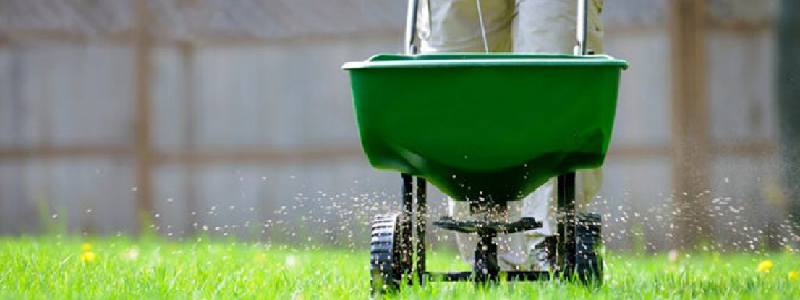
The first way to spread grass seed (aside from just doing it by hand) is to use a broadcast spreader. Broadcast spreaders are a great piece of equipment to have and are generally pretty cheap (you can get a basic spreader for under $50). They allow for an even layer of seed to be laid, and you can adjust the spray speed to lay thicker grass seed in areas of need. You can also use this same tool to spread your weed and feed, fertilizer(s), and even ice melt in the winter. Just be sure to clean it well after each use.
Broadcast spreaders are a great choice for anyone and will get the job done sufficiently. They are extremely easy to use and can be inexpensive (basic models are cheap, but there are broadcast spreaders made for large areas and/or commercial use). Furthermore, they require little maintenance and you do not need to worry about seed damage. Nevertheless, their wide range of uses makes them slightly less efficient than other tools. Foot traffic from people and animals can displace the seeds (or even a strong wind) causing disrupted germination and growth. Additionally, watering is generally required to ensure the seeds are breaching the soil.
Overseeder | Slicer Seeder | Slit Seeder
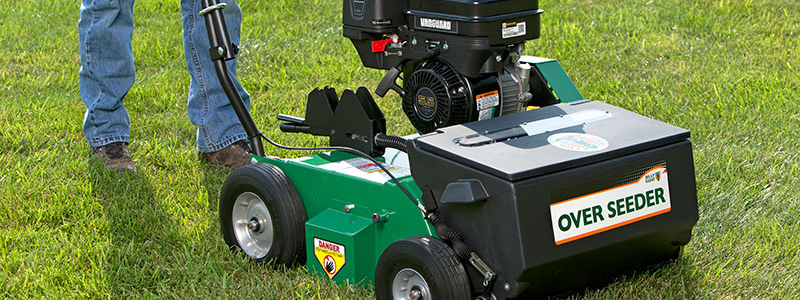
An overseeder (also often called a slice seeder, slicer seeder, and a slit seeder) is specifically designed for laying grass seed. Overseeders function by first making slices/slits in the soil then laying grass seed directly into those burrows. They are more precise and efficient than broadcast spreaders, but also not as easy to use or as inexpensive.
Overseeders deposit the grass seed directly into the soil at the correct depth allowing for an increased amount of germination and more consistent results. Also, using a slice seeder reduces the chances of seed displacement. However, you should only operate an overseeder if you know what you are doing. They can easily cause aesthetic harm to your lawn and require extra precision when using fertilizers.
Apply a Top Dressing†
A top dressing is a thin layer of compost or high quality soil generally a quarter to half inch thick over the entire lawn. A top layer will assist in creating a healthy thatch and promoting seed growth. In addition, this a great time to even out your lawn some which will assist in the growing process and allow for a better mow in the coming spring.
†This is not a must, but will assist with maintaining a lush lawn
Mid-Fall Lawn Care
The majority of the fall will be spent maintaining your lawn in the best way possible to ensure growth and to optimize health before the grass becomes dormant. Overgrown grass and large amounts of fall debris will damage your lawn and will be hard to recover from as fall is the main growing season for cool season grasses.
Cut your Lawn Shorter
Grass will grow until the first hard frost, so it is important to continue maintaining your lawn. Longer grass can be nice in the summer time because it can help shield the soil from harsh heat and sunlight. This allows the soil to maintain moisture better and keeps roots from scorching. Not to mention, longer grass generally feels more comfortable when you are spending an increased amount of time outdoors.
If you keep a longer lawn over the summer, be sure to return the grass to the recommended height (most cool season grass is around 3″) at the beginning of the season. As fall goes one gradually drop your deck height until you are about a quarter to half an inch below the recommended height. This will If you keep a longer lawn over the summer, be sure to return the grass to the recommended height (most cool season grass is around 3″) at the beginning of the season. As fall goes one gradually drop your deck height until you are about a quarter to half an inch below the recommended height. This will make it easier to remove fall debris and keep the grass from becoming matted with fall debris and eventually snow as well as make it easier to remove any fall debris.
Mulch
As the leaves start to fall, consider mulching your lawn before the leaves become thick. Mulching a small amount of leaves will help the soil gain their nutrients. A small amount of leaves will also help to create a healthy thatch.
DO NOT mulch the leaves every time they fall, but mulching the leaves a few times throughout the fall will help promote a healthy lawn.
Remove Fall Debris
Leaves and other fall debris blocks sunlight as well as nutrients. While some people will try to tell you that leaves help insulate the grass and feed important nutrients into the soil, they are INCORRECT. Mulching leaves can have some benefit, but leaving leaves on the lawn as they fall will only damage your grass. You can use a leaf blower, leaf vacuum, lawn vacuum, debris loader, or other equipment to keep fall debris off your lawn. Be sure to use a regular lawn/garden rake intermittently as it will help maintain thatch. Blowers and vacuums make the job much quicker, but generally do not assist with thatch buildup.
Weed, Weed, & Weed Again
Continue to kill weeds as they emerge. Be sure to keep your weed killer handy throughout the fall. Allowing weeds to grow on your freshly groomed lawn will expedite their growth and cause them to spread through fall as well as winter. It is imperative to keep your lawn free of weeds to promote healthy growth.
Late Fall Lawn Care
At the end of fall, you are really just prepping for the winter. In the early late fall (6-8 weeks after spreading weed and feed) it is time to break out your weed and feed a second time. This will help to strengthen your lawn right before it goes dormant and assist in preventing any new weeds from sprouting prior to first frost. Continue to treat your lawn as you did throughout fall outside of spreading weed and feed. As fall is wrapping up be sure to properly clean any of your equipment and maintenance any large issues prior to storage. This will make starting up lawn care in the spring much easier.
General Fall Lawn Care Tips
- Start the season off with dethatching followed by aerating
- Spread weed and feed prior to grass seed
- Keep your lawn short
- Keep your lawn free of fall debris
- Weed, weed, weed
- Use a rake intermittently even if you have power equipment
- Consider buying and laying sod in bare spots to expedite growth
- Grass continues to grow until the first hard frost
- Clean and maintain your equipment prior to storing it
